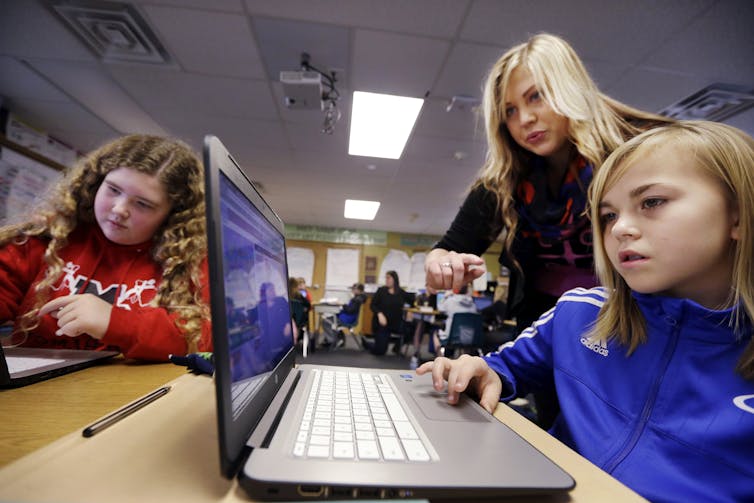Want to expand computer science education? Educate more teachers
Without university-level programs to provide teacher training for advanced computer science, states will not be able to offer high-quality computer science education to all students.

When advocates push for computer science education, usually they’re talking about boosting the number of schools offering computer science classes – with the intent to reach more students. But from our perspective as scholars of computer science education, a key factor is how many teachers are qualified to teach the subject.
Data from 2020 indicates that in one of the most advanced high school computer science classes taught around the country, the College Board’s Advanced Placement Computer Science Principles course, enrollment grew from nearly 44,000 in 2017 to more than 114,000 in 2020. The growth in enrollment – for that class and other computer science courses leading up to it – has been driven by more teachers taking quick classes on how to teach computer science.
Expanding the number of computer science courses depends on educating even more teachers to teach them. But almost half of all U.S. states don’t have a plan to teach computer science at the K-12 level. There are eight states that lack certification for computer science teachers. And 27 states and the District of Columbia don’t offer incentives for higher education institutions to offer computer science teacher education programs, according to data from Code.org.
What this means is schools won’t have enough teachers to expand computer science education. Increasing high-quality access to computer science is important for students who want to use computing as a tool for problem-solving and creativity.
Teacher education programs
The National Science Foundation and private groups have set up programs to increase the number of computer science teachers. But most of those training efforts happen in one- to two-week sessions that typically prepare teachers without a computing background to teach basic computer science principles.
They do teach some of the computer science content teachers will need to impart, but they emerge from the training often lacking the ability to translate that content for students. The short-term courses don’t offer that level of depth.
Without policies and incentives for more dedicated teacher preparation, we believe many new computer science teachers won’t be adequately prepared. Two-week training courses can give prospective computer science teachers a grounding in the basics. But in our view they can’t provide enough depth to prepare teachers to deliver high-quality computer science instruction.

A combination as a solution
At Michigan State University, in partnership with University of Detroit-Mercy, we have begun exploring another approach that we hope will better prepare school teachers to teach a full range of computer science courses.
Our effort puts university instructors with deep knowledge of computer science in high school computer science classes alongside a schoolteacher who is seeking to become a computer science teacher. The university instructor initially takes the lead, teaching the high school students while simultaneously demonstrating best practices for the teacher. As the year progresses, the high school teacher gains knowledge and experience, ultimately taking on more responsibility in the classroom.
We expect our evaluations to find that this method will allow the teachers to become more comfortable with the content. Then they can independently offer high-quality computer science instruction.
We have also seen great opportunities arise for schoolteachers to connect with their students’ identities and interests to explore computer science. For instance, one teacher used a coding tool called Cornrow Curves – named after an African and African American style of hair braiding – to explain and explore how algorithms work.
More recently, we have been thinking about how to build on social relationships that students value – such as with coaches and barbers – to design a computationally and culturally rich learning environment.
Aman Yadav receives funding from National Science Foundation, Robin Hood Foundation, and Apple.
Michael Lachney does not work for, consult, own shares in or receive funding from any company or organisation that would benefit from this article, and has disclosed no relevant affiliations beyond their academic appointment.
Read These Next
Oldest known cremation in Africa poses 9,500-year-old mystery about Stone Age hunter-gatherers
An ancient cremation would have been a community spectacle in a place returned to and reignited over…
West Coast levee failures show growing risks from America’s aging flood defenses
Levees protect more than 7 million buildings in the US today, yet they got a D-plus grade in 2025. A…
LA fires showed how much neighborliness matters for wildfire safety – schools can do much more to te
Managing fire risk is about more than regulations and rules. It’s also about caring for neighbors…






